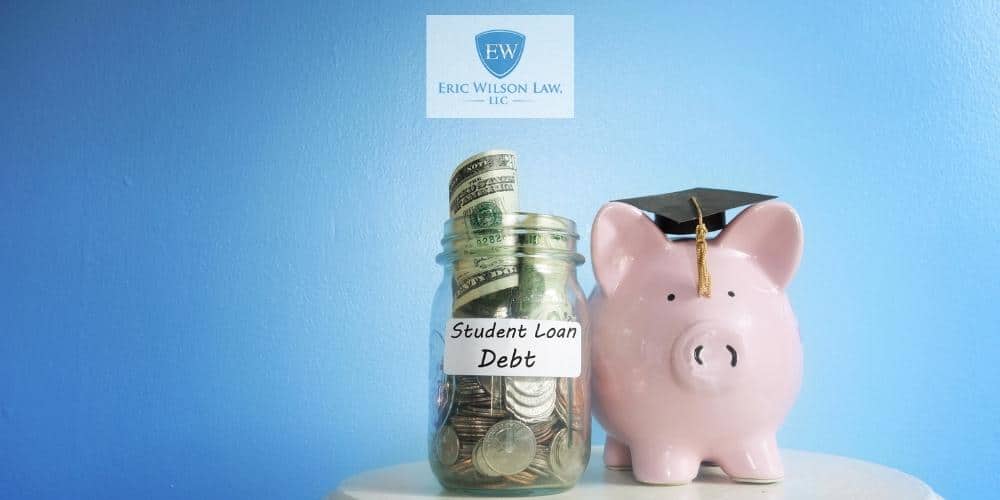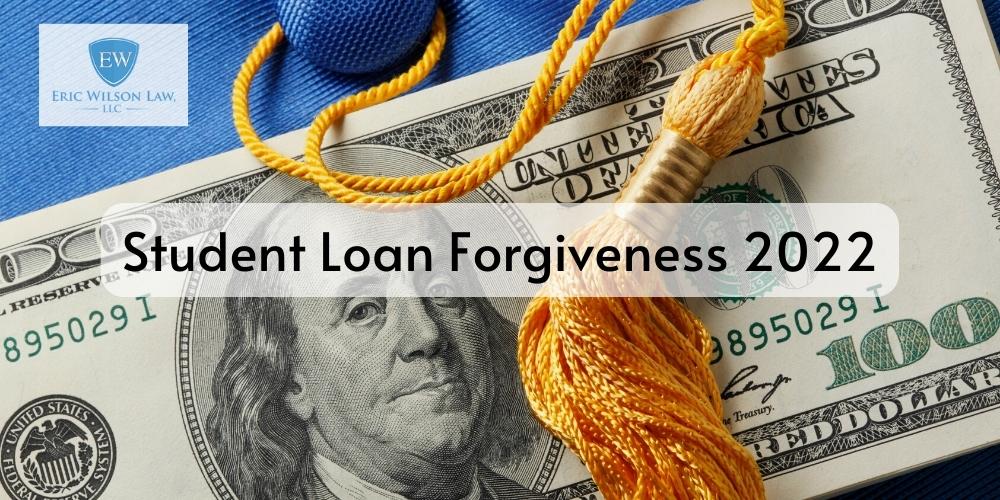In August 2022, President Biden announced student loan forgiveness for millions of low and middle income borrowers who are facing significant financial hardship. Additionally, Biden announced a plan to address the widespread student debt crisis in the United States. Even still, many Americans don’t qualify for relief or will have thousands of dollars left in student loan payments. The federal government and various student loan forgiveness programs can only do so much for people in this situation. So you may be wondering: what are the other options for student loan debt relief? Tuscaloosa bankruptcy lawyer Eric Wilson explains all this and more below.
If you are facing significant financial distress due to student loan debt, tax debt, medical debt, and credit card debt, you need the best financial counsel on your side. Call 205-349-1280 to schedule a free consultation with Eric Wilson.
What is the Average Cost of Going to College in the United States?
The average cost of just one year of college in the U.S. – including books, school supplies, and other living expenses – is approximately $35,551. That means that the average American college student may have more than $142,000 in student loan debt to their name if they complete 4 years of college.
Of course, this price tag does not take scholarships into account. Approximately 1.7 million scholarships are awarded to American college students every year, which adds up to about $46 billion from the U.S. Education Department every year. The average American undergraduate receives about $13,690 in scholarships and financial aid every year.
The average cost of going to college now compared to 40 years ago has skyrocketed. According to an August 2022 report from the White House, the total cost for 4 year college tuition has tripled since 1980. Additionally, Pell Grants used to cover the majority (80%) of the cost for a 4 year undergraduate degree, and now it only covers a third of the cost.
How Many Americans Have Student Loan Debt?
According to a statement from the White House, a staggering 45 million Americans have student loan debt. This means that student loan borrowers in the U.S. owe a grand total of $1.6 trillion.
Sadly, many Americans (approximately one-third of student loan borrowers) have thousands of dollars of student loan debt and no degree according to the U.S. Department of Education. That’s because many people only complete a couple years of college before they’re forced to drop out due to the high tuition prices.
The majority of these borrowers are part of the middle class. These monthly payments for student loans make all aspects of financial stability difficult for middle income families. Financial stability has become even more difficult due to the economic impact of the COVID-19 pandemic. Many federal student loan borrowers struggle to buy a house, start a 401k, start a business, maintain a good credit score, and bring home enough money to live comfortably.

Who is Eligible for President Biden’s Student Loan Forgiveness?
Because of the widespread financial hardship caused by federal student loans, President Biden has announced a student loan forgiveness plan in August 2022. You may qualify to have up to $20,000 of your undergraduate loans forgiven if you:
- Make less than $125,000 per year (less than $250,000 annually for married couples)
- Are a Pell Grant recipient
Non-Pell Grant recipients can qualify for up to $10,000 of student loan debt cancellation if they make less than $125,000 annually (or $250,000 annually for married couples). Student loan borrowers who are included in the top 5% of incomes will not receive these benefits.
The Impact of Targeted Debt Relief For Federal Student Loan Borrowers
This targeted debt relief should benefit thousands of low and middle income borrowers. According to the U.S. Department of Education, the majority (94%) of Pell Grant recipients make less than $60,000 annually. If all borrowers claim their student loan debt relief, this will be the impact:
- 43 million federal student loan borrowers will receive some sort of financial relief.
- 20 million student borrowers will receive full student debt cancellation.
- 87% of federal student loan relief money will go to low and middle income borrowers making less than $75,000 annually.
- Federal student loan debtors of all ages will receive relief. According to the U.S. Department of Education, 21% of borrowers are under 25 years old, 44% of borrowers are 26 to 39 years old, and 5% of borrowers are elderly people.
- Federal student loan forgiveness will help narrow the racial wealth gap in America. That’s because African American students are twice as likely to receive Pell Grants compared to white students.
Will Federal Student Loan Forgiveness Be Treated as Taxable Income?
No. The official White House statement claims that student loan debt relief will not be considered taxable income due to the implementation of President Biden’s American Rescue Plan.
Will There Be Another Student Loan Pause?
Yes, there will be one more student loan pause (AKA student loan forbearance) that extends through the end of the year: December 31, 2022. After this pause, many Americans will resume monthly payments on their student loan balances for the first time since March 2020.
How President Biden’s 3 Part Student Loan Forgiveness Plan Will Change the Federal Student Loan System
President Biden’s student loan forgiveness plan will also be altering the student loan system so that current and future borrowers can have more financial stability while paying off their remaining debt. The plan will achieve this goal by:
- Cutting monthly loan payments in half with the implementation of a new income driven repayment plan. This is how income driven repayment plans will work: monthly payments won’t exceed more than 5% of someone’s discretionary income. With this new federal student loan repayment plan, the average current and future borrower’s monthly payments will go down by more than $1,000.
- Changing the Public Service Loan Forgiveness (PSLF) Program to ensure that nonprofit workers, military members, and federal/state/local/tribal government workers receive credits for their federal student aid loan forgiveness.
- Reducing college tuition costs and/or holding schools accountable when they increase their tuition prices. President Biden plans to do this by doubling the maximum Pell Grant loan while fighting for free community college.
- Covering student borrower’s unpaid monthly interest in order to keep their remaining balance as low as possible while they make monthly payments.
- Raise the amount of what’s considered non discretionary income so that Americans who fall far below the federal poverty level (about $15 per hour for one borrower) won’t have to make a monthly payment on their federal student loans.
- Forgive loan balances after borrowers make 10 years worth of monthly payments on their outstanding debt. This will only happen if a borrower’s loan balance is less than $12,000.
How Can I Claim Student Loan Forgiveness?
Once the student loan pause ends on December 31, 2022, borrowers will be able to claim student loan forgiveness through a simple application process. However, some Americans may have had their student loans forgiven immediately because the Department of Education already had access to their relevant income data.
Options for Student Loan Repayment
If you don’t qualify for student loan relief under President Biden’s new plan, you still have options to pay off your outstanding debt.
File for Bankruptcy
If your federal student loans are causing you major financial distress on top of all your other debts, you may benefit from filing for Chapter 7 or Chapter 13 bankruptcy.
Chapter 7 bankruptcy is the most common type of bankruptcy that people file. It works by using money from some of your sold assets in order to pay off the majority of your debts. Many bankruptcy filers receive debt relief in as little as 90 days.
Chapter 13 bankruptcy is the second most common type of bankruptcy that people file. Instead of selling your assets, you will follow a 3 to 5 year repayment plan. When bankruptcy filers stick to these repayment plans, they can discharge the majority of their debts in time.
Refinancing Student Loans
Another option for paying off federal student loans is by refinancing them. This option is best for people who already have good credit and a stable job.
You would do this by replacing your multiple federal loans with one private loan that has a low interest rate. You can even speed up your repayment plan by choosing a loan term that equals less than what’s left on your current student loans. Doing this may increase your monthly payment, but on the bright side, you will save money on interest and make your student loan payments faster.
Sign Up for Autopay
Signing up for autopay may help you lower the interest rates on your student loans. That’s because student loan servicers will discount 0.25 from your interest rate if you allow them to take loan payments directly out of your bank account. It’s important to note that the money you save from this will likely be minimal, but it’s still money that you can put towards paying off your undergraduate loans for good.
Make Biweekly Payments
Instead of making monthly payments on your student loans, make biweekly payments. In other words: pay half of your normal monthly payment every 2 weeks. Doing this will knock off one monthly payment per year which will save you money on interest and shorten your student loan repayment schedule.

Call Tuscaloosa Bankruptcy Lawyer Eric Wilson Law Today
If you don’t qualify for President Biden’s new student loan debt forgiveness plan, you still have options to achieve a debt free life. Tuscaloosa bankruptcy lawyer Eric Wilson can analyze your current financial situation and help you come up with the best solution possible to pay off your federal loans, medical bills, credit card debt, you name it. Call 205-349-1280 to schedule a free consultation today.


